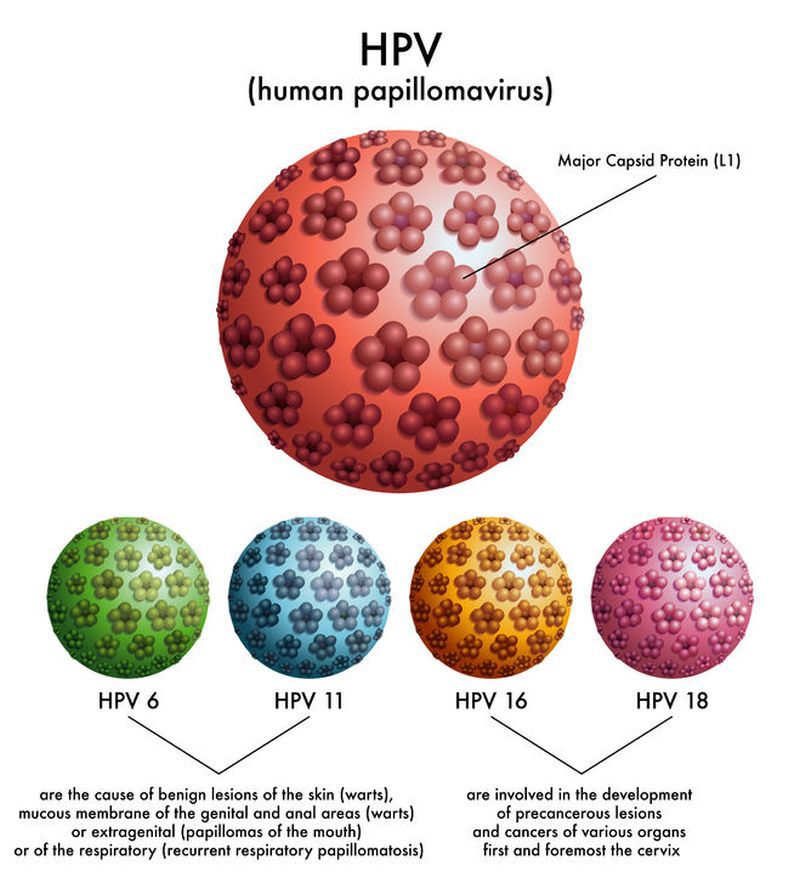HPV Infection, HPV Testing and HPV Vaccine (Human Papilloma Virus)

HPV is the abbreviation for Human Papilloma Virus and is one of the most common sexually transmitted infections. Currently more than 100 strains of this virus are known and affect not only women but also men. Most of the 100 strains are almost innocuous, they can only cause warts, viral papillomas or genital warts, or can be eliminated by the body's immune system without creating any embarrassment. More than 40 HPV strains specifically affect the genital area. And just some of these can cause cervical cancer. HPV infection (Human Papilloma Virus) HPV infection has no obvious symptoms, but it can easily see the appearance of warts on the skin surface.
These skin lesions have little risk of becoming cancer. The virus is transmitted through direct contact, whether it is a cut in the skin, open lesion, sexual intercourse, anal or oral any other type of skin contact in the genital region. In very rare cases, infection can be transmitted from the mother to the newborn during vaginal delivery. The most important risk factors for HPV infection are: multiple sexual partners - the higher the number of sex partners, the greater the risk of genital HPV infection - more than 45% of 20-year-old women active in . If the warts are not visible, it is recommended to perform a Pap test, which can tell if there are abnormalities that can lead to cervical cancer.
Other tests to detect HPV infection include colposcopy - an imagistic investigation of vulvar, vaginal and cervical inspection and cervical biopisa - which is the harvesting of a portion of suspected tissue to have cellular changes. The biopsy can be done by: pinching (harvesting a small portion of the col), conization (harvesting a larger cone-shaped fragment), endocervical curettage (inserting a curette in the cavity hole to scrape the cells at this level). And, last but not least, the HPV test, also called the HPV tip, consisting in taking a sample to be subjected to laboratory analysis. Prior to the HPV test, vaginal showers, the use of buffers or intravaginal suppositories. It is recommended to perform the test 8-12 days after the last menstruation.
High risk strains are considered HPV 16, 18, 31, 35, 39, 45, 51. The most serious complication caused by the HPV virus is cervical cancer. The strains that most commonly cause this cancer are 16, 18, 45 and 31. In Europe, more than 65% of cervical cancer cases diagnosed annually are caused by strains 16 and 18. HPV vaccine (Human Papilloma Virus) The HPV vaccine only protects against strains 16 and 18, those responsible for cervical cancer, and is recommended to be made for maximum efficiency before the onset of sexual life.
Even if the vaccine has been done, Pap test is mandatory every year to detect early changes in the cervix. .
Source : csid.ro
Views : 4820
Popular Article
- (photo) Nude becomes art.
Posted: 2018-03-17, 9591 views.
- The harmful effects of air conditioning on the skin
Posted: 2017-06-08, 8274 views.
- 3 causes of dyed hair discoloration
Posted: 2017-06-15, 8146 views.
- Why early puberty occurs in girls: symptoms, favors, diagnosis and treatment
Posted: 2017-10-24, 8003 views.
- Good or bad skin treatments in the hot season
Posted: 2017-06-07, 7740 views.
Recommendations
- (photo) Nude becomes art.
Posted: 2018-03-17, 9591 views.
- The harmful effects of air conditioning on the skin
Posted: 2017-06-08, 8274 views.
- 3 causes of dyed hair discoloration
Posted: 2017-06-15, 8146 views.
- Good or bad skin treatments in the hot season
Posted: 2017-06-07, 7740 views.
- Risks of practicing sports on hot days
Posted: 2017-06-12, 7335 views.
 4 effective ingredients in the fight against acne.
4 effective ingredients in the fight against acne. How to get rid of hiccups fast
How to get rid of hiccups fast The wheat bran diet: the secret of lost pounds as if by magic
The wheat bran diet: the secret of lost pounds as if by magic The recipe that will sweeten your soul this weekend!
The recipe that will sweeten your soul this weekend!  Is it dangerous or not to refreeze meat after thawing it?
Is it dangerous or not to refreeze meat after thawing it?  The unusual sign of diabetes indicated by saliva.
The unusual sign of diabetes indicated by saliva. What to drink to boost your immune system.
What to drink to boost your immune system. 10 foods that help you never age.
10 foods that help you never age. What actually happens in your body if you drink a cup of coffee for breakfast
What actually happens in your body if you drink a cup of coffee for breakfast 5 surprising benefits of chia seeds
5 surprising benefits of chia seeds